
What is it?
Those of us who revel in the glorious saturation of a valve amp running full-tilt will be all too familiar with the eardrum-splitting consequences. Certainly, many of the higher-wattage amp behemoths only reach their overdriven best at volumes considered unusable in non‑stadium environments.
Way back in the ’70s, load resistors could be found in the toolboxes of amplifier technicians, allowing them to work on valve amps without guitar speakers connected, and occasionally bespoke designs would be found in the rigs of touring musicians.
In 1980, Boston guitarist and technical wunderkind Tom Scholz, inventor of the Rockman line of portable amp-related products, released a pioneering loadbox in the form of the Power Soak.
Various companies have subsequently produced such devices; however, the potential for catastrophic amp damage is always a simple mismatch away, and loadbox designs have a chequered history for safety.
Thankfully, the concept of loadboxes has evolved over the decades, and the current generation of reactive devices –where a dynamic response curve more accurately replicates the speaker’s behaviour – are now considered industry standard. During the pandemic when us noisy guitarists were forced to play at neighbour-friendly levels, Two Notes released the Captor X.
This reactive loadbox with a variety of selectable IR speaker simulations in a small desktop form-factor was greeted with great enthusiasm and led to the Two Notes team setting its design-sights on creating a Swiss Army knife of amplifier connectivity, culminating in this Reload II.
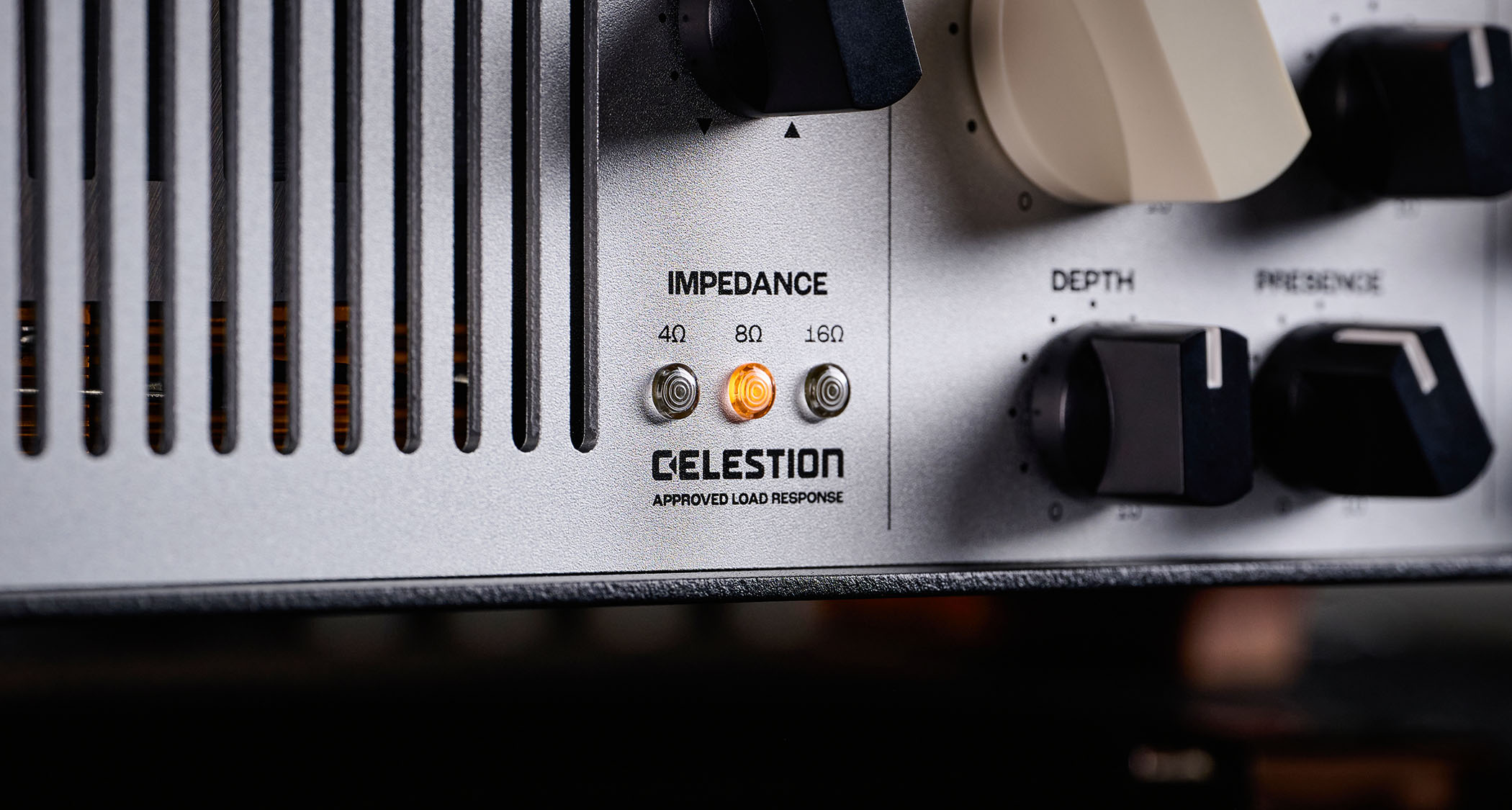
While the Captor X has a diminutive stature, the Reload II’s attractive wooden-end cheeks that frame the brushed metal chassis evoke the look of high-end bespoke recording studio equipment. When taking your rig to the stage, rack-ears can replace the wooden panels for a professional touring solution.
The Reload II packs quite a feature set, including inputs switchable for either amplifiers or line-level devices such as modellers and preamps, a Celestion-approved reactive load, two 215-watt channels of ‘dual mono’ power, stereo effects loop, tone-shaping controls and recording outputs. Included in the offering is a licence for Two Notes’ Genome amp modelling and speaker IR software application.
Specs

- PRICE: $1,099/£849/€999
- ORIGIN: China
- TYPE: Reactive load with dual mono power amp
- OUTPUT: 215W per channel
- DIMENSIONS: 365 (w) x 220 (d) x 89mm (h)
- WEIGHT (kg/lb): 6.9/15.2
- CHANNELS: 2
- CONTROLS: Amp in Level, Cab Volume, Output Level, Depth, Presence, Dry/Wet
- FOOTSWITCH: Assignable loop bypass (footswitch not included)
- ADDITIONAL FEATURES: Includes Two Notes Genome software suite
- CONTACT: Two Notes
Usability and sounds
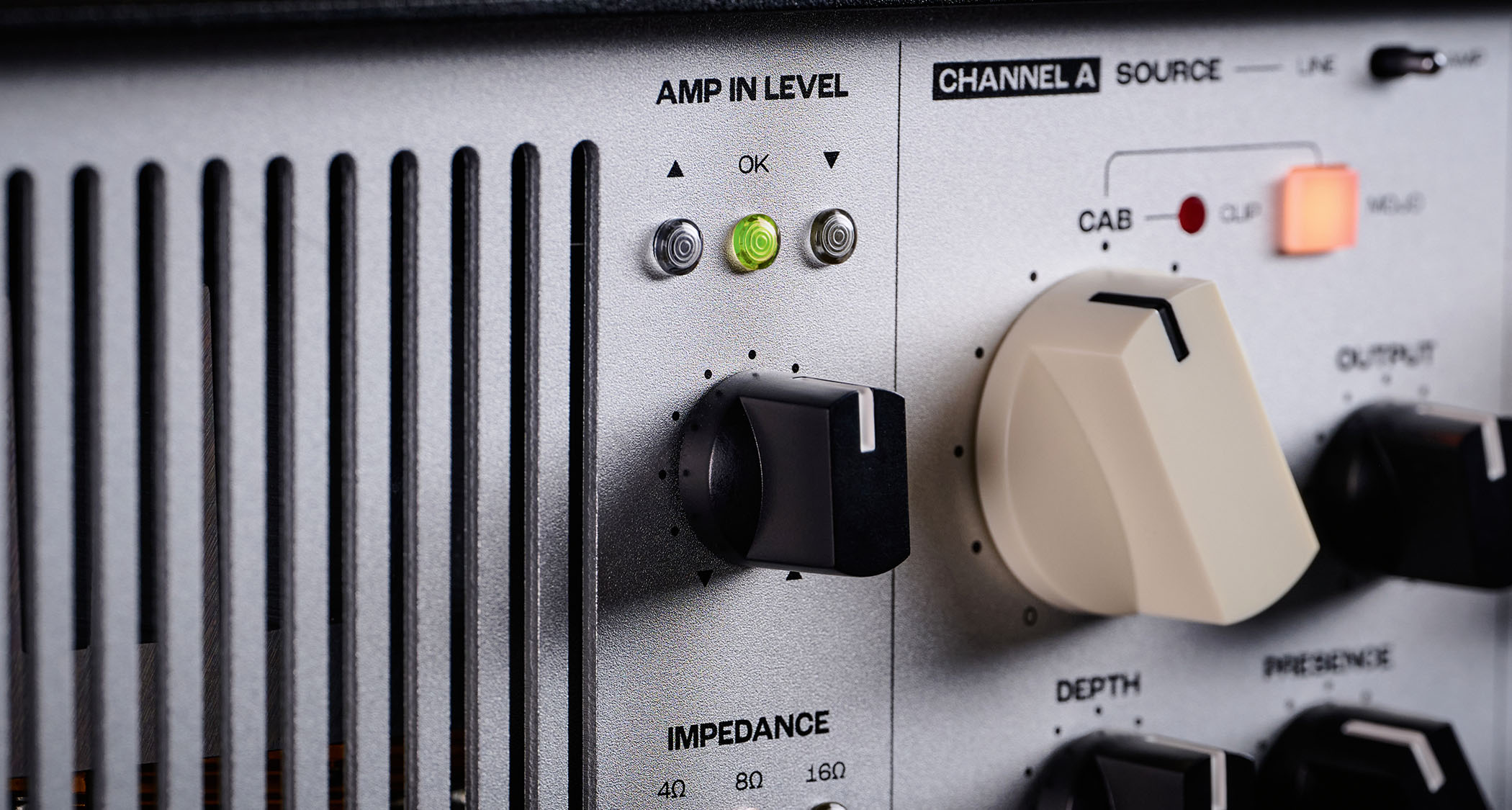
Beginning our tests with the basic application of valve amp attenuation, the output of a hand-wired Marshall 1959 was plugged into the amplifier input and a 4x12 cabinet with Celestion Greenbacks was plugged into Channel A’s speaker output.
With the rear-panel impedance selector matched to our amp, we dialled in the very useful amplifier input calibration, consisting of three level-indicating LEDs and a trim pot that enables fine-tuning for maximum performance from those Celestion-approved reactive loads. The cranked Marshall character came through fully intact while attenuating all the way down to just whisper quiet.
The tone controls – Depth and Presence – impart the type of low-end resonance and top-end sparkle found on modern high-performance amplifiers, bringing a modern aggressive edge to the Marshall’s classic sound. Similarly, the Mojo button punches the guitar sound forward in a similar way to a hi-fi’s loudness button.
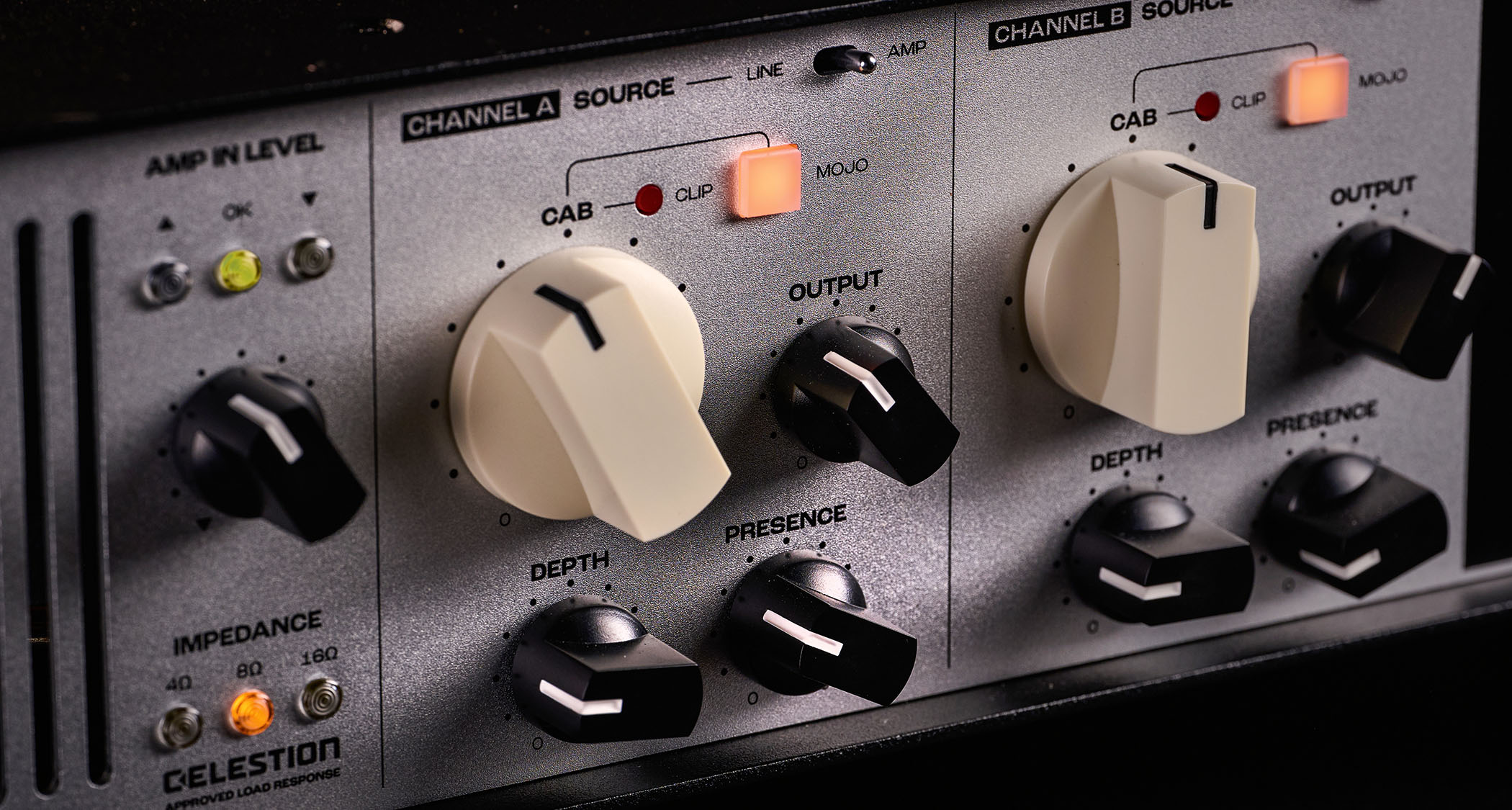
The fabled wet-dry-wet configuration, made famous by legends including Eddie Van Halen and Steve Lukather, where stereo effects feed two outside cabinets leaving the original dry signal in the centre cab, is possible by connecting stereo cabinets to the Reload II and a further mono cabinet to the ‘mother’ amp.
A truly huge three-dimensional tone is created that flatters and impresses in equal measure. Perhaps overkill for a pub jam but highly worth the effort for the right opportunity and setting.
More than pleased by the tonal neutrality of the attenuation, we progressed to the effects loop, which has level matching, stereo ability and a mix control. Using either an analogue Roland RE-301 Space Echo or a digital delay, there was seamless integration with no degradation of tone.
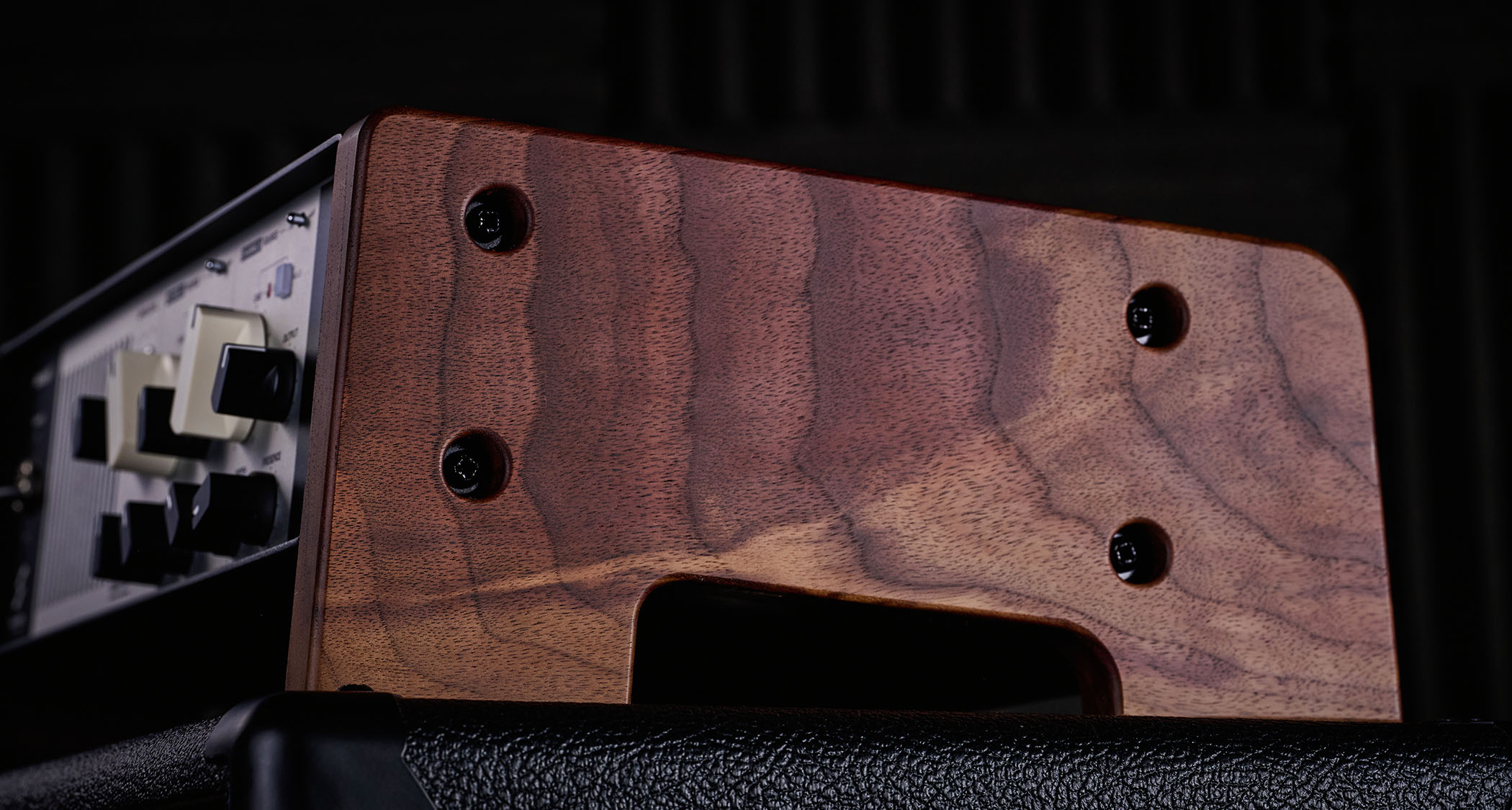
The direct signal from the amp, in its raw state, is sent to the stereo pair of recording outputs in the form of balanced jacks and XLRs. Since the unit itself has no in-built cabinet impulse responses, we needed to boot up the included Genome software and select from the range of 24 cabinet simulations to complete the rig.
We found the realistic nature of these captures quite the joy to behold, with plenty of microphone and position options to perfect your virtual speaker.
Delving deeper into the software, the wide range of modelled amps, effects and speakers impressed us with definition and realism, making this a first-choice for our software amp and speaker emulation needs. The bass SVT rig sound was particularly lifelike. Very inspiring!
Verdict
Verdict: ★★★★½
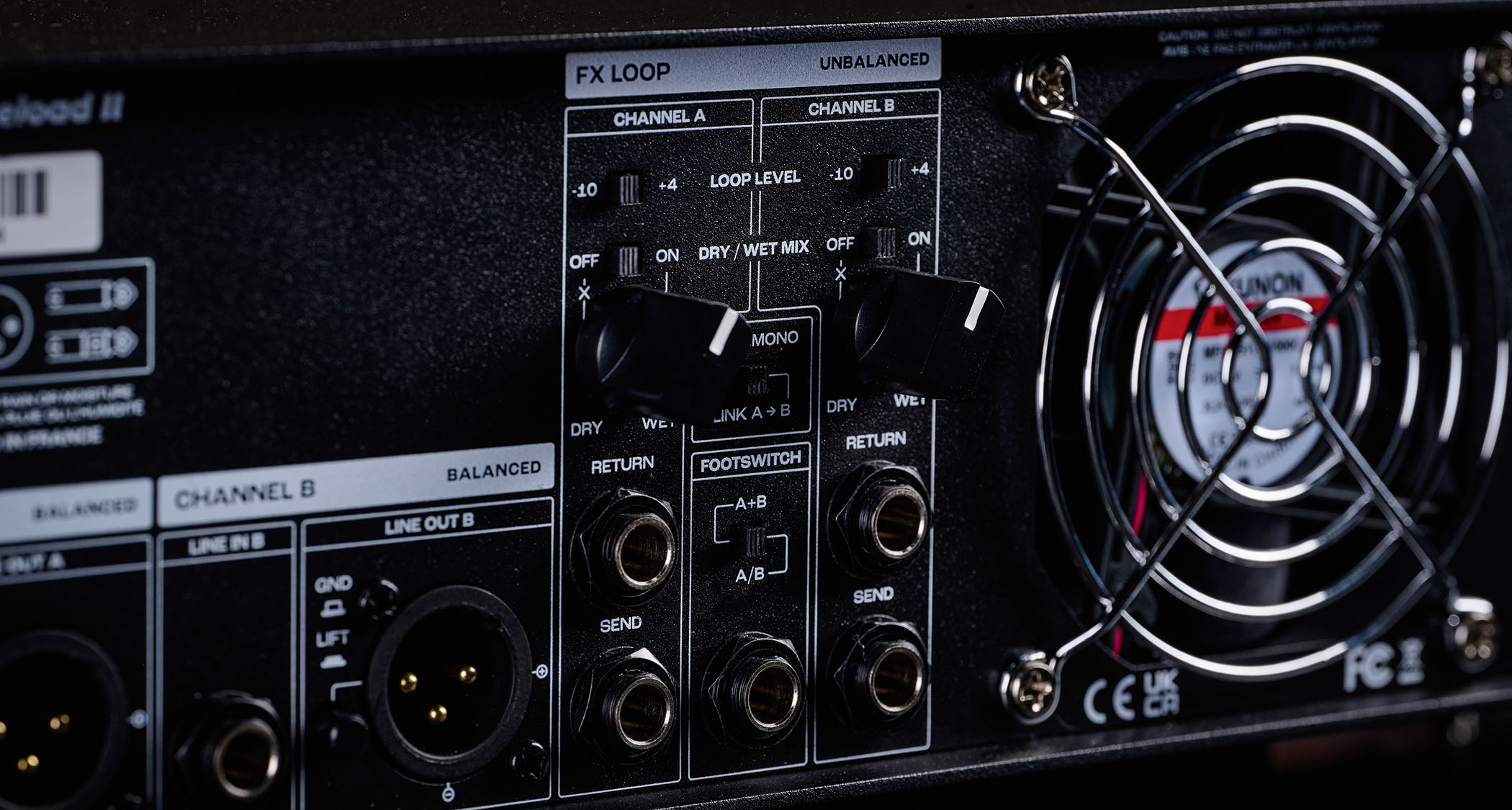
While this is a complex and critical product due to the potential for amplifier damage resulting from improper loading, Two Notes has a best-in-class reputation for reliability and safety and the Reload II’s plethora of attributes are excellently engineered. Nevertheless, it would be remiss not to mention a couple of minor quibbles here.
First, the position of the effects loop’s mix knob on the rear panel makes setup tricky, and it’s likely that rack-mounting the unit would further decrease accessibility. Also, it seems an unusual decision on the part of Two Notes to omit onboard cabinet IRs, which were included on the cheaper, less fully featured Captor X.
It seems an unusual decision on the part of Two Notes to omit onboard cabinet IRs, which were included on the cheaper, less fully featured Captor X
Had these been included, we would have the complete one-stop shop, without any need for a computer. This is less of an issue for the home recordist using a DAW with the included Genome software, but for the many bands that send guitar signals direct from amp modeller/amp to the PA, an additional IR-loading device will be needed to complete the virtual rig.
In contrast to other attenuators that use the loaded amplifier’s reduced output to drive the speakers, this unit reamps the input signal through its onboard power amplifier at all volumes. Happily, this is a great-sounding amplifier, handling guitar signals in a very sympathetic and familiar way.
The nearest competitive unit, the Boss Waza Craft Tube Amp Expander (£1,123), has a 100-watt limit, making it unsafe for 100-watt heads, such as Marshall examples, which can output in excess of 150 watts at full clip. The Waza Craft is also mono throughout, without the stereo effects loop or dual mono amplifier capabilities of the Reload II.
Guitar World verdict: As long as onboard IRs aren’t needed, this Swiss Army knife for amp connectivity is simply the best in its class.
Hands-on videos
Two Notes
Pete Thorn
R.J. Ronquillo
- “The realism of the virtual environments is stunning, creating in seconds what used to take many hours of studio time”: Two Notes Captor X SE review
- This article first appeared in Guitarist. Subscribe and save.







